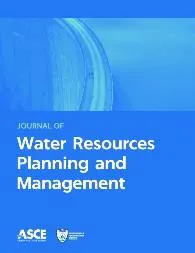Incorporating seasonality into an agroeconomic model of Ethiopia

Abstract
Ethiopia’s agriculture-based economy generates highly seasonal outputs, with most production occurring during the long-rains Meher season and a lesser amount during the short-rains Belg season. Despite numerous studies detailing the economic impacts of Meher precipitation, there is relatively little consideration of other seasonal or subseasonal climate impacts in Ethiopia, with most economic models only considering aggregated annual-scale production to simulate the Ethiopian economy. This paper serves to address both seasonal and subseasonal effects of climate using a partial equilibrium agroeconomic model of Ethiopia. First, an annual-scale model is disaggregated into a seasonal time step, corresponding to the two major cropping seasons in Ethiopia. Second, the effect of yield gains from a subseasonal forecast–based planting strategy is considered in the updated model. We found that crop yields and corresponding economic indicators varied widely by season and location, and that subseasonal forecast–based management strategies can, on average, increase gross domestic product (GDP), per capita calorie consumption, and lead toward reduced poverty, warranting the inclusion of seasonal and subseasonal processes in economic models and agricultural planning.
